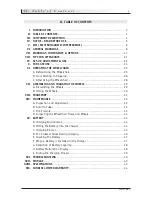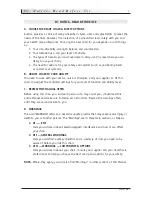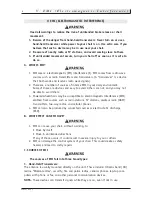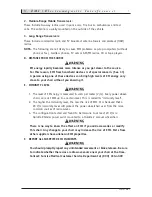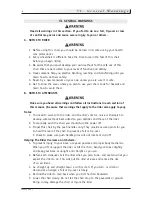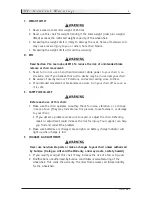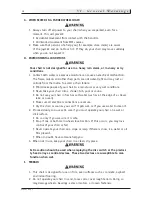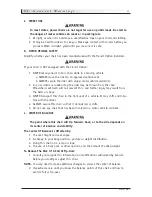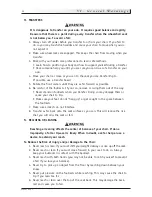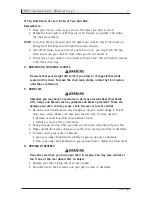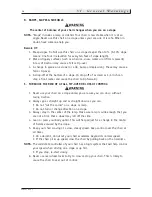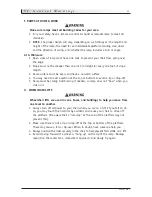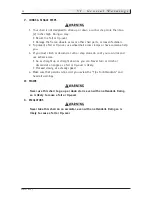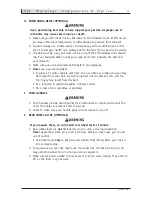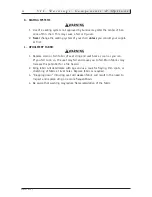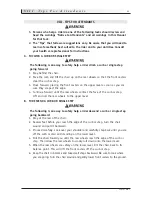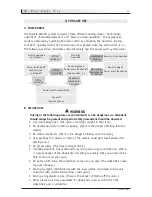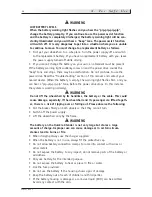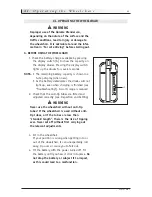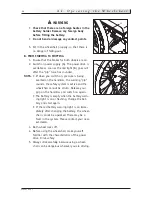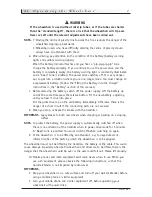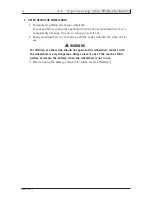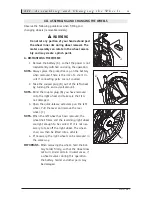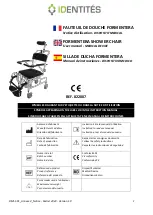
V I . G e n e r a l W a r n i n g s
930547 Rev. C
14
R. RAMPS, SLOPES & SIDEHILLS
The center of balance of your chair changes when you are on a slope.
NOTE–
“Slope” includes a ramp or sidehill. Your chair is less stable when it is at an
angle. Never use this chair on a slope unless your are sure it is safe. When in
doubt, have someone help you.
Beware Of:
1. Steep slopes. Do Not use this chair on a slope steeper than 10%. (A 10% slope
means: One foot in elevation for every ten feet of slope length).
2. Wet or slippery surfaces (such as when ice, snow, water or oil film is present).
A loss of traction may cause a fall or tip-over.
3. A change in grade on a slope (or a lip, bump or depression). These may cause a
fall or tip-over.
4. A drop-off at the bottom of a slope. (A drop-off of as small as 3/4 inch can
stop a front caster and cause the chair to tip forward).
S. TO REDUCE THE RISK OF A FALL, TIP-OVER OR LOSS OF CONTROL:
1. Never use your chair on a slope unless you are sure you can do so without
losing traction.
2. Always go as straight up and as straight down as you can.
• Do not “cut the corner” on a slope or ramp.
• Do not turn or change direction on a slope.
3. Always stay in the center of the ramp. Make sure ramp is wide enough that you
are not at risk that a wheel may roll off the side.
4. Lean or press your body uphill. This will help adjust for a change in the center
of balance caused by the slope.
5. Keep your chair moving at a slow, steady speed. Keep control over the chair at
all times.
• On a descent, do not let your chair accelerate beyond its normal speed.
• If the chair picks up speed, slow the chair by pulling back on the handrims.
NOTE–
The solid state controller of your chair has a logic system that will help control
your speed when driving on a slope or up hill.
• If you stop, re-start slowly.
6. Never use rear wheel locks to try to slow or stop your chair. This is likely to
cause the chair to veer out of control.



